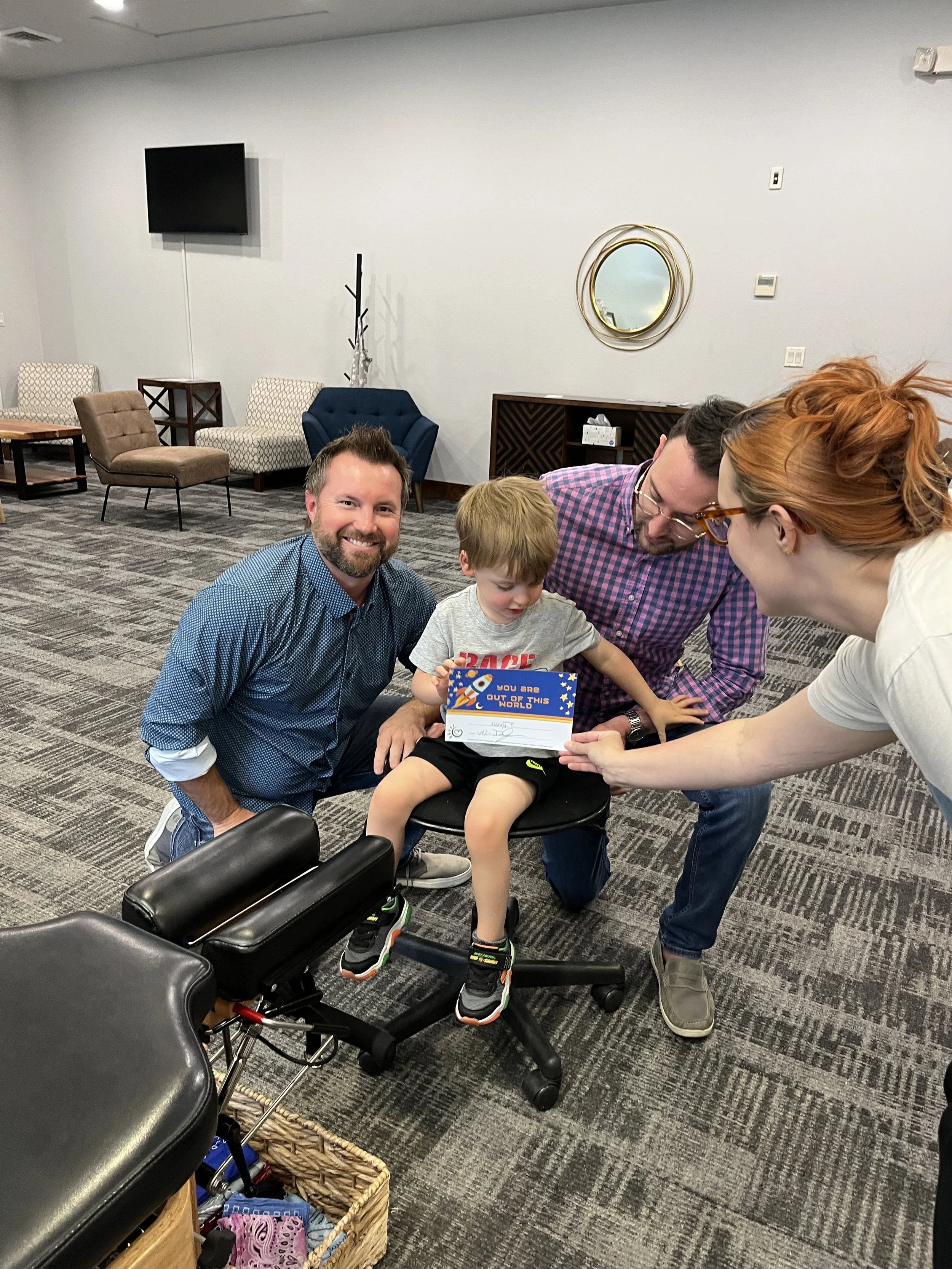You Don’t Have to Fight Every Battle—Here’s What to Notice Instead
As parents, we’re often told to stay consistent, set boundaries, follow routines, and correct behaviors quickly.
And while those tools can help, there’s something deeper we rarely talk about:
What your child’s nervous system is experiencing underneath the behavior.
Because what looks like defiance, drama, or withdrawal… might actually be a sign that your child’s nervous system is overloaded and dysregulated.
And when that’s the case, no amount of correction will bring calm.
What brings calm is connection. Regulation. Safety.
Behavior Is Communication
Every meltdown, shutdown, and outburst is your child’s body saying,
“Something doesn’t feel safe right now.”
It might be sensory overload.
It might be emotional build-up.
It might be a body that’s running on empty from stress that’s been stuck for far too long.
And the truth is:
You don’t have to correct every moment.
You don’t have to control every behavior.
You just have to know what to notice.
🔄 What You Repeat, You Wire
Our kids are building brain pathways every single day.
Every experience—emotional, physical, relational—is either reinforcing stress and survival… or safety and connection.
When we celebrate their wins, even the small ones, we reinforce their sense of self, agency, and security.
When we respond with regulation (even when they’re dysregulated), we give their brain a pattern worth repeating.
Why It Matters
Subluxation creates static in the system. It keeps the nervous system locked in defense mode—and that affects everything:
Digestion, focus, mood, energy, immunity, sleep, and overall adaptability.
Over time, those stuck stress patterns become the body’s “new normal.”
Unless we help the system reset.
That’s what nervous system-based chiropractic care is designed to do:
Clear the interference and restore connection.
It’s not about chasing symptoms.
It’s about helping the brain and body reconnect—so healing can begin at the source.
Because no matter your age, if stress is stuck in the system, healing can’t move forward.
Regulation always starts with connection.
What Do These Wins Look Like?
These are the neuro-soft signs we look for every day in practice:
A child who makes eye contact instead of withdrawing
A meltdown that used to last 30 minutes… now lasts 5
A moment of redirection instead of collapse
A teen who opens up instead of shutting down
A child who tries again after failure instead of giving up
A deeper, more restful sleep
A calmer morning
A longer moment of genuine connection
These may not show up on a milestone chart.
But they are the signs that healing is happening where it matters most—in the nervous system.
💛 Celebrate the Person, Not Just the Performance
We live in a world that loves big wins, fast results, and visible progress.
But what our kids really need is for us to celebrate who they are becoming—not just what they’re achieving.
The more attention we give to regulated moments, the more those moments get repeated.
And over time, we help our children build neural pathways for calm, courage, and connection.
So when your child does something brave—even if it’s tiny...
When they take a breath instead of yelling…
When they come to you with a problem instead of hiding it…
Celebrate it. Speak life into it. Build that pathway.
Because every time you celebrate regulation, you’re helping their nervous system learn:
“This is safe. This is who I am. This is what I can return to.”
🌱 Connection Over Control
When our children feel seen, safe, and supported—not just in their big wins, but in their everyday efforts—they develop the tools to self-regulate, adapt, and grow.
And that’s the real breakthrough.
So yes, keep guiding them.
Keep teaching them.
But also—celebrate them. Soften with them. Notice what’s working.
Because healing isn’t always loud.
Progress isn’t always obvious.
But every time you choose connection over correction, you’re building something deeper than compliance:
You’re building lifelong resilience.
And your child will carry that with them—through every season of life.


